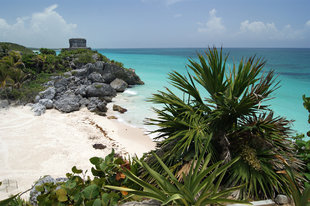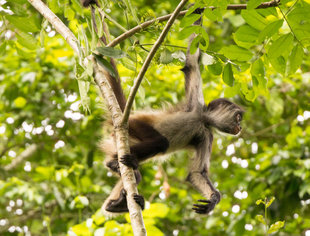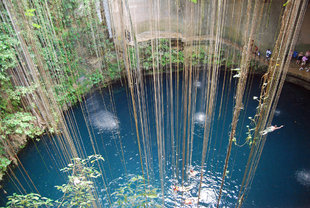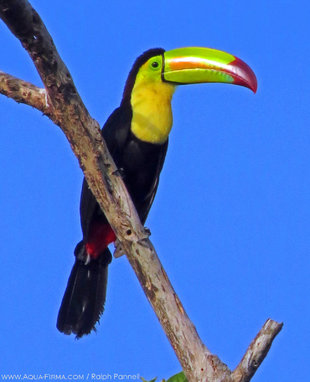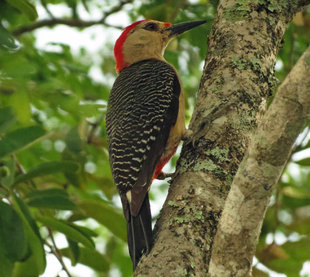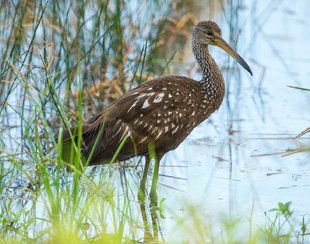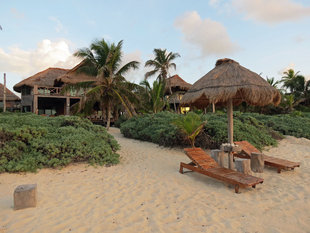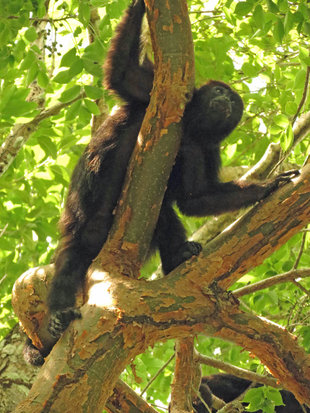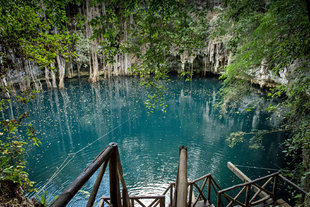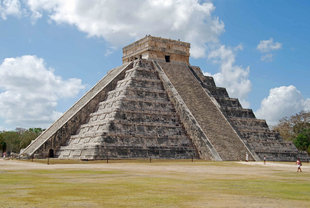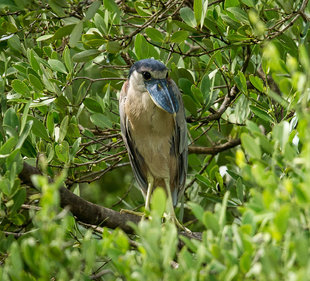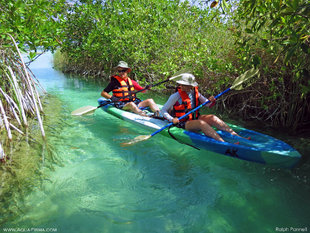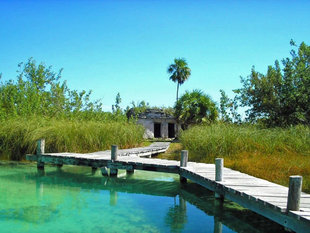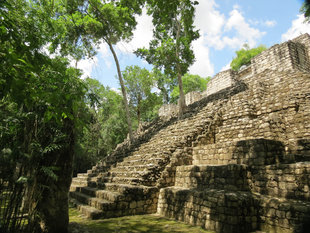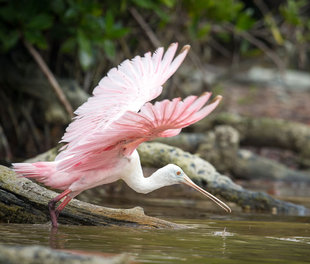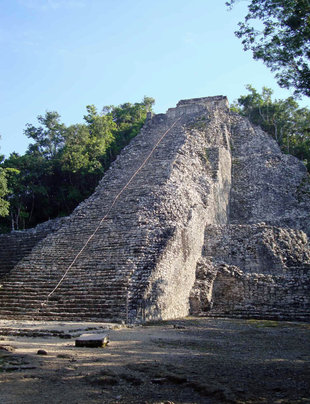These privately guided adventures take you to some of the best preserved and most idyllic wildlife areas in Mexico's Yucatan Peninsula; and to three of the region's largest and best preserved Mayan Sites: Chichen Itza, Tulum and the forest enshrouded Coba.
The variety of locations we can explore within five days is difficult to match - here is a check list of the habitats, Mayan sites and ways in which we explore the area:
- Rainforests of Otoch Ma'ax Yetel Kooh on foot and serene paddling in open canoes at sunrise
- Mexico's largest known troops of the endemic Yucatan subspecies of Spider Monkeys
- Look for flocks of flamingos, crocodiles & birds at Rio Lagartos coastal lagoon
- Mayan sites of Chichen Itza, Tulum, Ek Balam and Coba
- Snorkel with juvenile Green Turtles feeding in seagrass beds
- Explore lagoons of the 4,500km2 Sian Ka'an Man & Nature Biosphere Reserve
- Swim and snorkel in cenotes and through clearwater channels amongst mangroves, herons and orchids
- Explore caves where snakes have uniquely adapted to capture bats as they fly in their thousands to feed in surrounding tropical forests and lakes
- Birdwatching: colourful birdlife, including hummingbirds, toucans, giant woodpeckers and trogons, with local birding guide
- Spanish colonial architecture of Valladoid
* * * * * * * *
For wildlife, our first target is the forest of Otoch Ma'ax Yetel Kooh, which in Mayan means House of the Spider Monkeys & Pumas - two key species which this reserve protects. One of the most unique features of the reserve is its large shallow lagoon where we canoe serenely through rising mist at dawn. A lake like this is rare to find in the Yucatan. Most freshwater winds its way underground, where it erodes a system of underground rivers in the mainly limestone bedrock.
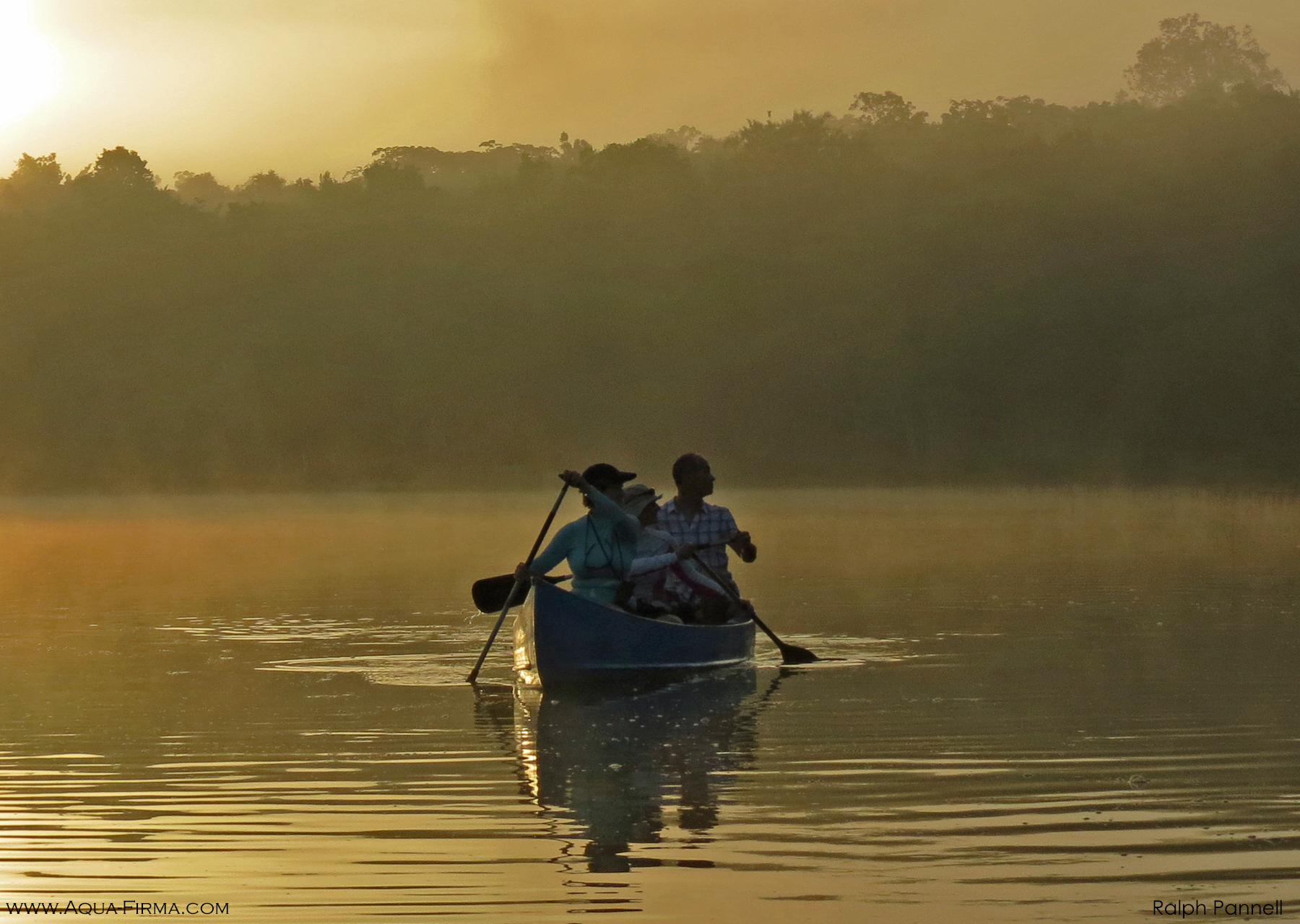
Limestone is the predominant foundation of the Yucatan - once the seabed, brought to the surface 66 million years ago when the giant meteorite Chicxulub landed in the north of the peninsula. This is the catastrophic event which brought to an end the era of non-avian dinosaurs.
We can take you to see evidence of this seabed in caves south of the Sian Ka'an Biosphere Reserve, where thousands of perfectly fossilized shellfish cover parts of the cave surfaces. These are the caves where snakes have uniquely learned to live in darkness, feeding on bats which fly out of the caves in their thousands each night. We cycle through forest to reach the caves and don helmets and head torches to go in search of bats, snakes and fossils in one of the Yucatan's most unique locations.
The northern part of Sian Ka’an is dominated by three huge clear water lagoons. Here we use sit-on-top kayaks supported by a speed boat, to explore through reeds and along the forest edge where dragonflies, hawks and other birds can be seen. You don’t have to kayak and indeed we all switch to speed boat to reach a channel between the second and third lagoon. Here we can swim (and snorkel), drifting with the flow amongst the contorted stems of mangroves, orchids, herons and small fish. For wide perspectives across Sian Ka’an we can scale a canopy watch tower; and also look for butterflies, small deer and racoons from raised walkways through boggy lakeside forest.
The Yucatan has some stunning birdlife and for those keen, we will explore forests late afternoon or early morning close to where we stay for the Mayan site of Coba. Most Mayan sites were rediscovered engulfed in forest. At Coba, much of the forest has been left and we can climb the main temple for a dramatic perspective over the canopy.
We will also visit Chichen Itza, which one of the region's most impressive pre-Colombian Sites built more than 1,200 years ago. Chichen Itza covers a vast area and means 'The Mouth of the Well of Itza - the Water Sorcerer'. Its huge Pyramids, ball courts and temples carry a strong influence of the central Mexican Toltec culture, giving the site a unique architectural style.
The third site we visit is the coastal temple and port city of Tulum. This has perhaps the most fascinating known history and occupies a beautiful location overlooking the Caribbean Sea. A little to the north of this area we find a lagoon at Akumal inside a barrier reef where green turtles can often be seen grazing on sea grass. Here the water is warm and shallow, so we can don snorkelling gear and hope to swim with turtles as we go.
By the end of this trip, you will have experienced a fascinating insight into the history and diverse ecosystems of the Yucatan Peninsula. This 5 days trip is an ideal extension to one of our expert led Whale Shark Research & Photography Experiences.
Itinerary
Sample 5 Day Itinerary
This itinerary can be tailored to your own interests and timings.
Day 1: Arrive Cancun
Early morning, your private driver / guide will collect you from your hotel in Cancun and provide you with a quick initial briefing; before driving you northwest to an area called Rio Lagartos. This is a lovely natural coastal area where we can hope to see flocks of flamingos, crocodiles and other wildlife. The drive is about 3 ½ hours.
In the afternoon, we will drive south about 1 ¼ hours to the Mayan ruins of Ek Balam. These are beautifully set amongst tropical dry forest.
Another ½ hour south and we will be at the lovely Spanish colonial town of Valladolid. Here, you will stay in a hotel right on the main plaza, opposite the cathedral. The restaurant here is excellent, where some dishes will be cooked amongst flames right beside you at the table.
Day 2: Chichen Itza, Cenote & Valladolid
Valladolid is just 45 mins from Mexico's most famous Mayan ruins: Chichen Itza. It is entirely up to you how early we take you there, but early has fewer visitors and is cooler.
Your guide will bring some of the archaeological secrets of the temples alive. It's an extensive area and you can decide when you are there, how much of it you want to see and how long you would like to stay.
The temperature will soon rise, so the best thing to do from Chichen Itza is head to a cenote called Ik Kil. You can swim and snorkel here in cool crystal clear waters.
You won't have seen much of Valladolid thus far, so we will get back in time for a late lunch & afternoon visit to the cathedral and museum if you wish.
Overnight in Valladolid.
(B)
Day 3: Otoch Ma'ax Yetel Kooh Spider Monkey Rainforest & Coba
This morning, our aim is to take you onto a lake, canoeing through the slowly evaporating mist before the sun has risen. You may hear the call of howler monkeys as you paddle gently amongst birds and reeds, with tropical forest surrounding you on the banks of the lake.
As the sun brings more and more colour to the leaves, we will step ashore and climb a canopy tower to look across the lake and forest canopy. We will then take you walking through the forest, in search of a subspecies of Spider Monkey which is unique to the Yucatan.
From this forest area, we will take you to the Mayan ruins of Coba. Here we can walk to the top of the ruins, for commanding views over surrounding forest. Excellent birdwatching opportunities.
We will stay in a very quiet guest house in this area.
(B)
Day 4: Sian Ka'an Biosphere Reserve & Kantemoh
If you wish, we can head back to the Spider Monkey forest. Alternatively, your guide can take you birdwatching closer to Coba.
Our next target is a lake at the edge of the enormous Sian Ka'an Reserve. Here you will step into kayaks and paddle around the lake edges in search of birds of prey and other birdlife. There is a narrow channel leading into a second lake, which you will also kayak across. At the opposite side, we will step out of the kayaks and float through brackish water mangroves along a narrow clearwater channel. Look out for orchids as you go.
You will eventually reach a small temple, from where we will walk back to your kayaks along a wooden boardwalk.
Once back across the lakes, we may have time to walk amongst forest where racoons can sometimes be seen.
From Sian Ka'an, we will head east to the coast at Tulum for lunch; before driving south to some very unique caves where snakes have adapted to pluck bats out of the air. We will set you up with some mountain bikes to cycle to the caves. The first cave chamber is very large, where we can see some interestingly adapted fish; and fossils in the walls which show how this whole area was thrust up from the seabed. You will be able to see a few snakes trying to take bats here. If you don't feel claustrophobic, then we can arrange full caving gear for you, so that you can crawl into a tunnel where there are more snakes snatching at bats!
It will be dark as we head back to the vehicle. We will then drive, late, back to Tulum and stay in a hotel here.
(B)
Day 5: Tulum & coastal Yucatan
At whatever time you wish, we will take you to the Mayan temples of Tulum, which are set spectacularly on cliffs overlooking the Caribbean Sea.. You can snorkel at a beach here if you like, or explore the incredible history of this place with the help of your guide.
If there is time, then we will take you snorkeling amongst turtles; or swim in the clear cool waters of another cenote.
(B)
Dates
Prices per person sharing
Price includes:
- Land transportation in air conditioned vehicle
- All accommodation
- Meals - all inclusive in Cancun … breakfasts elsewhere
- Entrance fees to temples, terrestrial, cenotes and marine park areas
- Boat and kayak equipment
- Expert local naturalist bilingual guide
- Archaeological & historical specialist guides at Chichen Itza, Tulum & Coba
Not included:
- Air fares
- Lunches and dinners days 2 - 5
- Beverages days 2 - 5
- Personal expenses
- Tips

